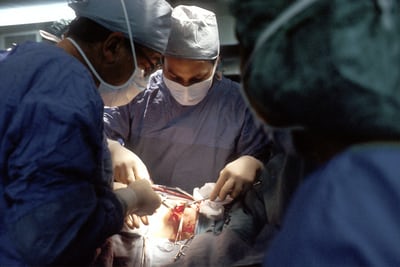What You Need to Know About Skin Grafts
Can pig’s skin actually be put on a human?
April 12, 2021
A skin graft is a medical procedure that takes skin from one part of the body and transports it onto another. A skin graft can be done if the patient has recently lost skin due to a burn, illness or injury.
When you are thinking of having a skin graft done there are four to choose from, you should choose the one best for you. The first one is autograft or autologous graft which is skin obtained from the patient’s own downer site (patient’s own body). A second option would be allograft or heterologous graft which is skin obtained from another person. This could be taken from a family member or anyone willing to donate. The third option would be xenograft or heterograft which is a skin obtained from pigs. Pig skin is great for burn victims who have recently lost skin in a fire and gotten second to third degree burns.
On October 11 of 2019, burn specialists at Massachusetts General Hospital (MGH) successfully used live-cell genetically engineered pig skin for a temporary closure of a burn. The last option could be Synthetic skin substitutes which are manufactured products that can work as skin equivalents. Only autografts are permanent. There are a variety of doctors who can perform skin grafts. Plastic surgeons, general surgeons and some dermatologists. Plastic surgeons specialize in aesthetic and reconstructive surgery. General surgeons specialize in a wide variety of diseases. A skin graft can cost around $18,000 but can go up to $28,000 with Anesthesia and hospitality.
A skin graft is a major surgery considering you are replacing damaged or dead skin tissue with new healthy skin. Just like any other surgery, skin grafts bring serious risks and potential complications. The healing process is fairly simple, it only takes about two weeks to fully heal. Smaller ones take about 5-10 days because they are closed with stitches. During the healing process of a skin graft, doctors recommend keeping the area dry while showering for 1-2 weeks and not taking baths for 2-3 weeks to avoid submerging the area under water. Patients should also avoid excessive exercise for 3-4 weeks so the area does not stretch to get the smoothest results possible. A very important part in the healing process is also keeping it moisturized. Patients should be applying Vaseline to and around the area 2-3 times a day.
Although most skin grafts are successful, the percentage of one falling is 53.4%. The lower limbs experience some of the highest complication rates. If a skin graft does fail, it is a simple fix. You can just have another skin graft but this does mean another operation. There are burn centers all around the world. But, Stony Brook has a burn center which is the only designated burn care facility in Suffolk County. They often treat firefighters who suffer burns and need skin grafts.
All in all, burn victims have great options to make themselves good as new. Yes, including pig skin.

